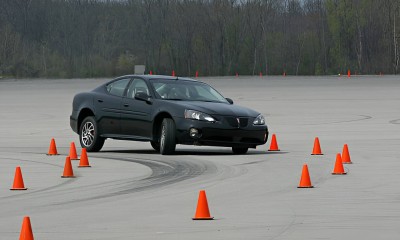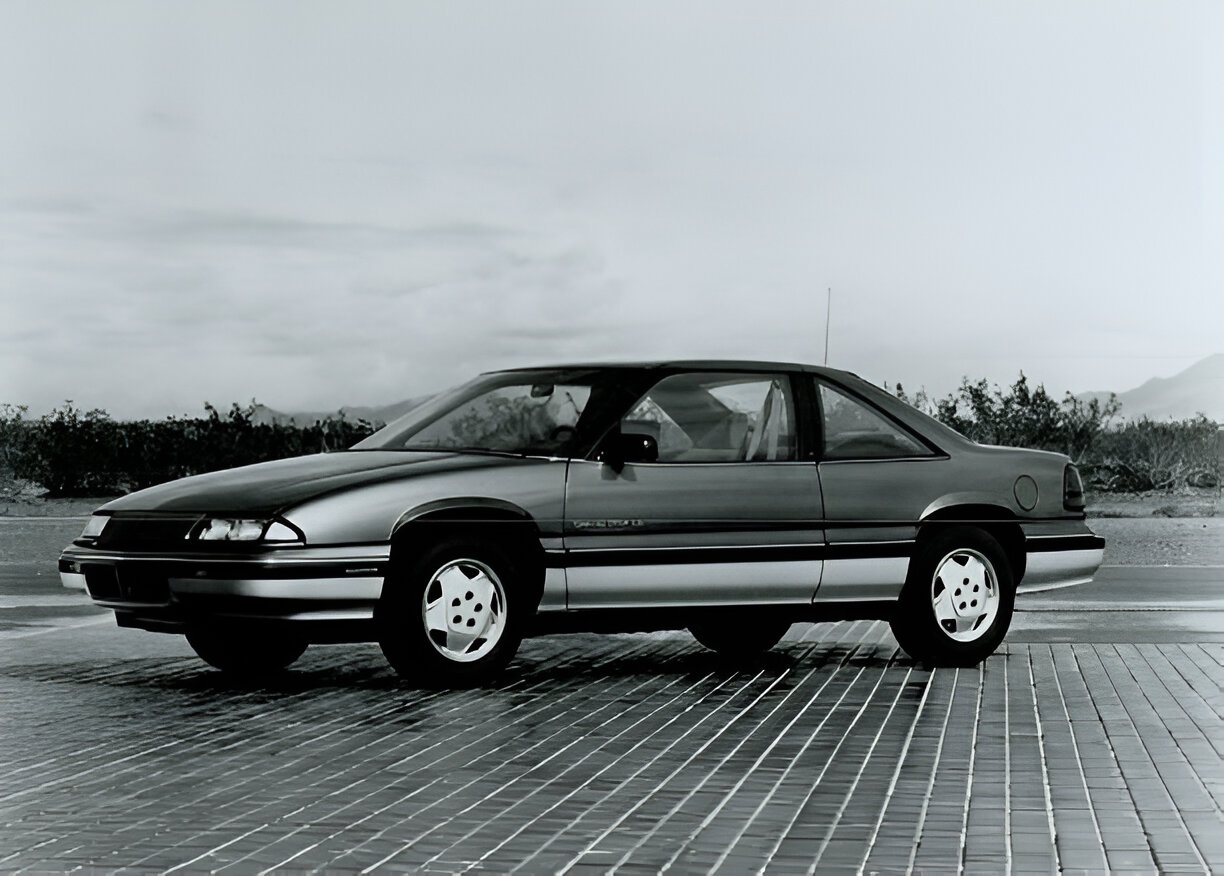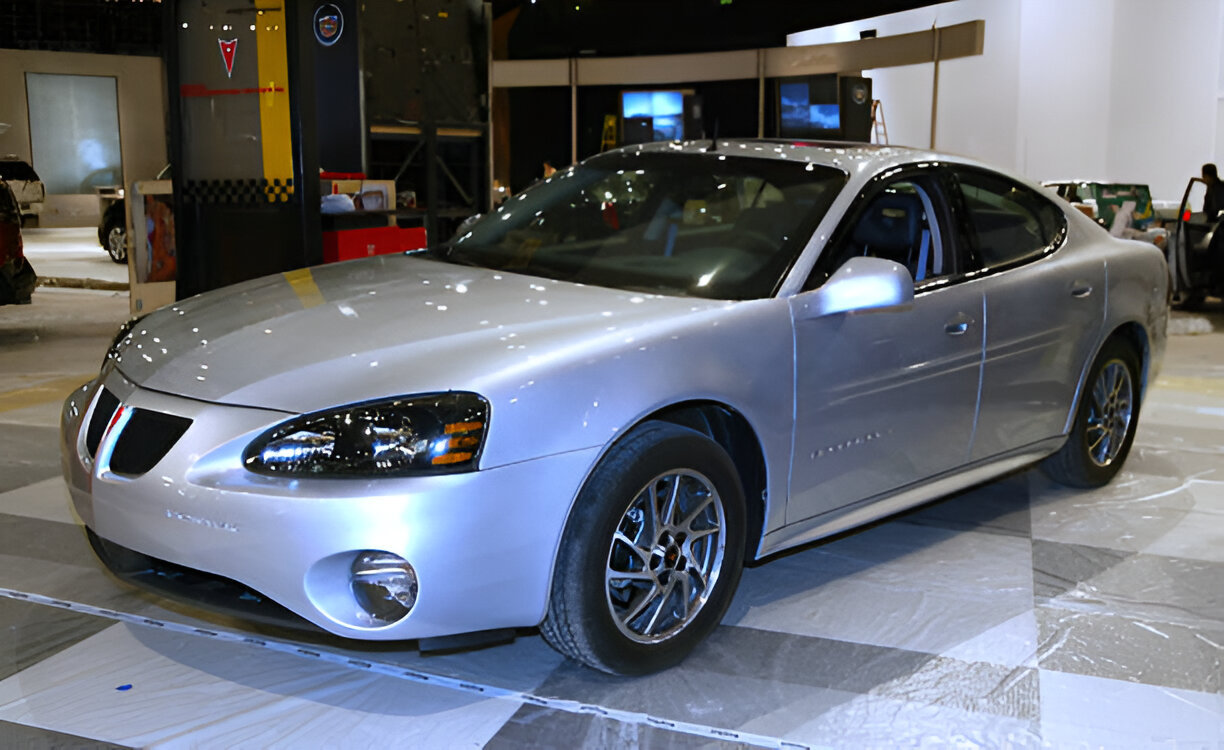Pontiac Grand Prix Tuning Guide | L67 V6 & LS4 V8 Performance

During the late 1990s and 2000s, the Pontiac Grand Prix, particularly in its GTP and GXP trims, carved out a unique niche in the automotive landscape. It stood as a pillar of accessible American performance, delivering supercharged V6 or V8 power in a practical front-wheel-drive sedan package that appealed to both families and enthusiasts. These vehicles offered a compelling blend of daily usability and exhilarating straight-line speed, making them a popular choice for those seeking muscle without compromising practicality.
While these models were impressive directly from the showroom, their factory engine calibrations represent a significant compromise, engineered to meet broad emissions standards and accommodate varying fuel qualities across different markets. This guide serves as the definitive technical manual for professional tuners and serious enthusiasts looking to safely and methodically unlock the substantial performance reserves hidden within these platforms. This comprehensive report will provide a technical breakdown of the key performance engines, a detailed exploration of staged tuning paths, a critical analysis of the platform's primary mechanical limitation the transmission and an explanation of the central role that professional Pontiac Grand Prix tuning files play in orchestrating superior performance. A professional Pontiac ECU remap is the key to transforming this capable sedan into a true performance machine.
What is Pontiac Grand Prix Tuning? The Foundational Role of an ECU Remap
Pontiac Grand Prix tuning is the process of modifying the vehicle's Powertrain Control Module (PCM), also known as the Engine Control Unit (ECU), to optimize engine and transmission parameters. A professional pontiac ecu remap adjusts fuel delivery, ignition timing, boost levels, and shift points to safely increase horsepower, torque, and overall driver engagement beyond factory settings.
The factory ECU calibration is intentionally conservative, designed to function reliably under a vast array of operating conditions, from extreme temperatures to inconsistent fuel quality. This one-size-fits-all approach inherently leaves a significant amount of performance on the table. A professional remap meticulously adjusts critical parameters stored in the ECU's maps. These include, but are not limited to:
-
Spark advance tables for optimized ignition timing
-
Fuel enrichment maps to ensure a safe air-fuel ratio under boost
-
Electronic throttle targets for improved responsiveness (on applicable models)
-
Cooling fan activation temperatures to better manage heat
-
Torque converter lockup strategies for improved power delivery and transmission life
-
Transmission line pressures for firmer, faster shifts
It is crucial to understand that hardware modifications and software tuning are not independent steps; they exist in a symbiotic, causal relationship. Installing performance hardware, such as a smaller supercharger pulley or a high-flow exhaust, creates the potential for more power. However, it is only through a corresponding ECU remap that this potential can be safely and effectively realized. For example, a smaller pulley increases boost, but without the necessary adjustments to fuel and ignition timing, this will lead to dangerous engine knock, known as Knock Retard (KR), which can negate power gains and cause severe engine damage. The ECU remap is the indispensable enabler of all physical performance modifications the "brain" that commands the new "muscles" to work correctly and in harmony. For professional workshops, sourcing high-quality, dyno-validated
tuning files is the most critical step in any Grand Prix tuning project.
The Heart of the Matter: A Deep Dive into Grand Prix Performance Engines
Effective tuning is impossible without a granular understanding of the specific engine platform. The most desirable Grand Prix models for performance tuning are equipped with one of three distinct and capable powerplants.
The Legend - 3.8L V6 L67 Series II (1997-2003 GTP)
The L67 is widely regarded as one of General Motors' most robust and celebrated engines. This cast-iron, 90-degree V6 is renowned for its durability and immense tuning potential, forming the heart of the seventh-generation Grand Prix GTP. From the factory, it was rated at 240 horsepower and 280 lb-ft of torque, generated with the help of an Eaton M90 Gen 3 supercharger. Its key tuning advantage lies in its strong internal components and a low 8.5:1 compression ratio, making it exceptionally well-suited for significant increases in boost pressure.
The Evolution - 3.8L V6 L32 Series III (2004-2007 GTP)
The L32 is the direct and refined successor to the L67, powering the eighth-generation Grand Prix GTP. While based on the same fundamental architecture, the Series III engine incorporated several key engineering improvements. Factory output was increased to 260 horsepower and 280 lb-ft of torque, thanks primarily to a more efficient Eaton M90 Gen V supercharger and cylinder heads with improved airflow. Other significant upgrades included stronger powder-metal connecting rods and a transition from a mechanical throttle cable to electronic throttle control (drive-by-wire), which brought engine management into a more modern era.
While the L67 and L32 share a common tuning foundation, the specific upgrades in the L32 create important differences. The more efficient supercharger and better-flowing heads mean the L32 will produce more power than an L67 with the exact same modifications. Furthermore, the electronic throttle control adds a new layer to the tuning process, allowing for precise mapping of throttle response and torque modeling directly within the ECU.
The Game Changer - 5.3L V8 LS4 (2005-2008 GXP)
The introduction of the LS4 V8 in the Grand Prix GXP marked a paradigm shift for the platform. This engine is a unique member of the legendary GM LS family, specifically engineered for a transverse, front-wheel-drive application. With an all-aluminum block, it produced an impressive 303 horsepower and 323 lb-ft of torque. A key feature of this engine is Active Fuel Management (AFM), also known as Displacement on Demand (DOD), a system that deactivates four cylinders under light load conditions to improve fuel economy. While powerful, the LS4 presents unique tuning challenges, primarily related to managing its output through a front-wheel-drive layout and a transmission that was notoriously under-specified for its torque.
|
Feature |
L67 Series II V6 |
L32 Series III V6 |
LS4 V8 |
|
|
Model Years |
1997–2003 |
2004–2007 |
2005–2008 |
|
|
Trim |
Grand Prix GTP |
Grand Prix GTP |
Grand Prix GXP |
|
|
Displacement |
3.8L (231 ci) |
3.8L (231 ci) |
5.3L (325 ci) |
|
|
Horsepower |
240 hp @ 5,200 rpm |
260 hp @ 5,200 rpm |
303 hp @ 5,600 rpm |
|
|
Torque |
280 lb-ft @ 3,200-3,600 rpm |
280 lb-ft @ 3,600 rpm |
323 lb-ft @ 4,400 rpm |
|
|
Compression Ratio |
8.5:1 |
8.5:1 |
10.0:1 |
|
|
Induction |
Supercharged (Eaton M90 Gen 3) |
Supercharged (Eaton M90 Gen 5) |
Naturally Aspirated |
|
|
Block Material |
Cast Iron |
Cast Iron |
Aluminum |
A Tuner's Roadmap: Staged Upgrades for the 3800 Supercharged V6 (L67/L32)
The 3800 V6 platform is exceptionally robust, capable of handling double or even triple its factory power output on the stock bottom end when modified and tuned correctly. The following staged approach provides a clear and proven path for performance enhancement.
The Critical Metric: Understanding & Managing Knock Retard (KR)
Before any modifications are undertaken, it is essential to understand Knock Retard (KR). KR is the ECU's self-preservation mechanism. Using two microphones (knock sensors), the ECU "listens" for the specific frequency of engine knock or detonation. When detected, it immediately pulls ignition timing to protect the engine from damage. This reduction in timing is measured in degrees and is displayed as the KR value on a scan tool.
A nuanced understanding is required to differentiate between true, harmful KR and "false" KR. True KR is typically sustained under load and increases with RPM or boost, indicating a tuning or mechanical issue. False KR can be a brief spike caused by mechanical noise, such as an abrupt shift or throttle change, and is generally not a cause for concern. The primary objective of all supporting modifications is to enable increased boost from smaller pulleys while maintaining a KR value at or near zero degrees during wide-open throttle operation.
Stage 1: The Foundation (Approx. +25-40 WHP)
This stage offers the most significant performance gain for the investment and establishes a solid foundation for future upgrades.
-
Professional ECU Remap: This is the mandatory first step to recalibrate all engine and transmission parameters to support the new hardware.
-
Smaller Supercharger Pulley: The primary source of power gain in this stage. Dropping from the stock ~3.8-inch pulley to a 3.5-inch (L67) or 3.6-inch (L32) pulley increases boost pressure by several PSI. The L32 requires a slightly larger pulley due to the higher efficiency of its Gen V supercharger.
-
Supporting Mods: These are non-negotiable components required to prevent KR with the increased boost. This includes colder heat range spark plugs (e.g., Autolite 104s) and a lower temperature thermostat (typically 180°F).
-
Intake: A high-flow drop-in air filter or a full Cold Air Intake (CAI) system is necessary to supply the supercharger with sufficient airflow.
Stage 2: Enhancing Airflow & Exhaust (Approx. +50-70 WHP)
Stage 2 focuses on reducing exhaust backpressure. This improves the engine's overall efficiency, which allows for the use of an even smaller supercharger pulley and results in a significant net power gain.
-
Exhaust Upgrades: The factory exhaust system is a major point of restriction.
-
Downpipe: Models made before 2004 feature a highly restrictive "U-bend" in the downpipe. Replacing this with a 3-inch aftermarket downpipe is one of the single most effective bolt-on modifications available.
-
Headers / Power Logs: The restrictive cast iron exhaust manifolds can be replaced with either full tubular headers for maximum flow or more affordable ported manifolds, often called "Power Logs".
-
-
Pulley Size: With the significant improvement in exhaust flow, a smaller pulley (e.g., 3.4-inch) can be safely utilized, requiring an updated ECU remap to optimize for the new hardware configuration.
Stage 3 & Beyond: Advanced Performance Builds
For those seeking maximum performance, the following upgrades push the 3800 platform to its limits.
-
Intercooling: The factory Eaton M90 supercharger is non-intercooled, leading to high intake air temperatures under boost. Installing an air-to-water intercooler core between the supercharger and the lower intake manifold is the gateway to serious power. It drastically reduces intake temperatures, mitigates KR, and enables the use of very small pulleys (3.2-inch and below) for massive power increases.
-
Camshafts: Upgrading the camshaft improves the engine's volumetric efficiency, allowing it to breathe better and make more power with less boost.
-
Fuel System & E85: At this level, an upgraded fuel pump and larger fuel injectors are required to meet the engine's demands. E85 fuel is a powerful tool for high-boost applications due to its high effective octane rating and charge-cooling properties, making it highly resistant to knock.
-
Turbocharging: The ultimate power path for the 3800 V6 is a turbo conversion. By removing the Eaton supercharger and installing a properly sized turbocharger system, power levels exceeding 600 horsepower have been achieved on the stock engine block.
|
Stage |
Required Modifications |
Recommended Pulley Size (L67/L32) |
Estimated Power Gain (WHP) |
Key Consideration |
|
|
Stage 1 |
ECU Remap, Colder Plugs & Thermostat, Intake |
3.5" / 3.6" |
+25-40 |
Best performance value. Establishes the necessary foundation. |
|
|
Stage 2 |
Stage 1 + Downpipe, Headers/Power Logs |
3.4" / 3.5" |
+50-70 |
Focuses on reducing exhaust backpressure to improve efficiency. |
|
|
Stage 3 |
Stage 2 + Intercooler |
3.2" - 3.0" |
+80-120 |
Manages intake heat, allowing for significantly more boost and power. |
|
|
Stage 4 |
Stage 3 + Performance Camshaft |
3.0" & smaller |
+120-150 |
Improves engine breathing for more power at lower boost levels. |
|
|
Stage 5 |
Stage 4 + Upgraded Fuel System, E85 Fuel |
2.8" & smaller |
+150-200+ |
E85's high octane rating allows for maximum boost and timing advance. |
Data synthesized from sources. Power gains are estimates and vary based on vehicle condition, dyno type, and specific parts used. 
Taming the Beast: A Tuning Guide for the Grand Prix GXP LS4 V8
Tuning the LS4-powered GXP presents a distinct set of challenges and opportunities. The goal is to leverage the V8's inherent power while mitigating the platform's primary weaknesses, namely the drivetrain and front-wheel-drive layout.
ECU Tuning: The Essential First Step
Software modification is paramount for the LS4 engine.
-
AFM/DOD Delete: The most critical software modification is the deactivation of the Active Fuel Management (AFM) system. The constant switching between 4-cylinder and 8-cylinder modes can cause undesirable exhaust drone, vibration, and a non-linear power delivery. A professional ECU remap can disable this system entirely, ensuring constant V8 operation and a significantly improved driving experience.
-
Torque Management & Throttle Response: A quality tune will also recalibrate the factory torque management system, which limits power output to protect the transmission. Adjusting these tables allows more of the engine's power to reach the wheels. Additionally, sharpening the drive-by-wire throttle response provides a more direct and engaging feel.
Bolt-On Modifications
-
Intake & Exhaust: Cold air intakes and cat-back exhaust systems are readily available for the GXP. These modifications improve engine breathing, enhance the V8's sound, and can free up modest horsepower gains.
-
Camshafts: Like all LS-family engines, the LS4 responds exceptionally well to camshaft upgrades. However, this is an advanced modification that can add significant power and also place extreme stress on the stock transmission, making drivetrain upgrades a prerequisite.
Forced Induction: The Path to Big Power
For those seeking the ultimate in performance, complete turbocharger kits are available for the LS4 platform. These systems can push wheel horsepower well beyond 500, but they are only viable on vehicles that have undergone a complete transmission rebuild with high-performance aftermarket components. Every modification, from a simple AFM delete to a full turbo build, requires a corresponding custom ECU file from a trusted source like our
The Drivetrain Dilemma: Fortifying the 4T65E-HD Transmission
A successful Grand Prix tuning strategy must be a holistic powertrain strategy. Focusing solely on increasing engine power without addressing the limitations of the 4T65E-HD transmission is a guaranteed path to premature and catastrophic mechanical failure. This transmission is, without question, the platform's Achilles' heel. It was known to be a weak point even behind the stock supercharged 3800 V6, and GM was forced to detune the LS4 V8 from its full potential specifically to ensure the transmission's survival through the factory warranty period. Any significant increase in torque will expose its weaknesses.
Common Failure Points
-
Torque Converter Clutch (TCC) Failure: This often manifests as an RPM "hunting" or oscillation while cruising at a steady speed, along with shuddering sensations. It can trigger diagnostic trouble codes such as P0741.
-
Input Clutch Piston Wear: This leads to the infamous "neutral drop" symptom, where the vehicle experiences a delayed or non-existent forward engagement from a stop, often requiring higher RPMs to finally engage with a harsh bang.
-
Harsh Shifts (P1811 "Max Adapt"): This common trouble code indicates that the transmission's computer is commanding maximum line pressure to compensate for internal hydraulic leaks, frequently caused by a worn valve body.
-
Hard Part Failure: At higher power levels, the stock input shaft is known to shear off, and the factory drive chain can break under the stress of increased torque.
Essential Upgrades for Reliability
-
For ALL Tuned Cars: The single most important and cost-effective reliability upgrade is an external transmission fluid cooler. Heat is the primary enemy of the 4T65E, and excessive temperatures accelerate wear on all internal components. An auxiliary cooler is mandatory maintenance for any tuned Grand Prix.
-
For Stage 2+ Power Levels:
-
Valve Body Upgrades: Installing a shift kit and upgraded components like a new Actuator Feed Limit (AFL) valve and boost valve is crucial for restoring proper hydraulic pressure, ensuring crisp shifts, and preventing clutch slippage.
-
Hardened Input Shaft: A stronger input shaft made from 300M alloy steel is considered mandatory for any application making over approximately 300 wheel horsepower.
-
Upgraded Clutches & Drive Chain: High-performance friction plates and a stronger aftermarket drive chain are necessary to handle the increased torque of high-power builds.
-
Our expertly crafted ECU remaps include optimized transmission tables designed for either stock or upgraded hardware. For complex projects, our experts can advise on the mechanical limits and recommend appropriate tuning strategies. Please contact us for specialist support.
Why Choose HP Chiptuningfiles for Your Grand Prix?
The diverse and technical nature of ECU tuning presents a clear need for a reliable, expert source of software. Professional workshops require a partner who can consistently deliver high-quality, validated tuning files that they can confidently load onto customer vehicles. HP Chiptuningfiles is that partner.
For Tuning Workshops & Dealers
-
Quality & Reliability: We provide custom-developed, dyno-tested tuning files, not generic off-the-shelf tunes. Our files are engineered by experts to deliver safe, reliable power tailored to specific hardware modifications.
-
Comprehensive Database: Our extensive tuning file database contains a vast library of files for various Grand Prix models and modification stages, saving workshops valuable development time.
-
Professional Hardware & Support: We support professional workshops by providing files compatible with their existing tuning tools. We also offer a full range of professional-grade tuning hardware for workshops looking to expand their capabilities.
-
B2B Partnership: A(https://hp-chiptuningfiles.com/b2b) with HP Chiptuningfiles offers significant advantages, including competitive credit-based pricing, dedicated technical support from our engineering team, and a dependable supply of expertly crafted files to grow your business.
Create your professional account today and gain access to our entire database of Pontiac tuning files.
Explore our tuning file prices and discover how Chiptuningfiles can enhance your workshop's capabilities and profitability.
Have a complex project? Our expert support team is ready to provide the solutions you need. Contact us to discuss your requirements.
Frequently Asked Questions (FAQ)
How much horsepower can you get from a Pontiac Grand Prix GTP? With basic Stage 1 mods (pulley, intake, ECU tune), gains of 25-40 WHP are common. With Stage 2 exhaust work, 50-70 WHP is achievable. Heavily modified builds with intercoolers, cams, or turbochargers can exceed 400-600 WHP, but require significant supporting modifications, especially to the transmission.
Is ECU tuning safe for my Grand Prix's engine? Yes, when performed by a professional using a high-quality, dyno-tested file. A proper tune optimizes parameters within the engine's safe mechanical limits. It is crucial to pair modifications with the correct tune and address known weak points like the transmission to ensure long-term reliability.
What is the first mod I should do to my supercharged Grand Prix? The best first step is a "Stage 1" package, which includes a professional ECU remap, a slightly smaller supercharger pulley, a cooler thermostat, and colder spark plugs. These modifications must be implemented together to provide a safe and effective power increase.
Do I need to upgrade my transmission when tuning my Grand Prix? For basic Stage 1 tuning, the stock 4T65E-HD transmission is generally adequate, though an external cooler is highly recommended. For any modifications beyond that (Stage 2+), addressing the transmission is not just recommended; it is essential for reliability. The stock transmission is the platform's primary weak link under increased power.
Conclusion: Unleash Your Grand Prix's Full Potential with HP Chiptuningfiles
The Pontiac Grand Prix GTP and GXP represent a golden era of accessible American performance, with an immense and well-documented tuning potential. From the legendary 3800 V6 to the unique LS4 V8, these platforms offer a rewarding experience for those willing to follow a staged, methodical approach to modification.
The key to unlocking this potential lies in a professional, high-quality pontiac ecu remap. It is the digital foundation upon which all physical performance gains are safely and reliably built. The ECU file is what translates hardware upgrades into tangible, usable power while protecting the engine and optimizing the entire powertrain.
Whether you are a professional workshop seeking reliable files for your clients or an enthusiast planning your next build, HP Chiptuningfiles is your trusted partner. Explore our chiptuning files today and let's unlock the true performance of your Pontiac Grand Prix.
Other news and updates

Read more OBD Breakthrough: Tuning Support for the Continental ASG1 ECU in Audi e-tron & Porsche Taycan
The Continental ASG1 ECU used in the Audi e-tron and Porsche Taycan is now fully supported for OBD read/write. This breakthrough allows safe tuning of torque limits, current maps, thermal strategies and pedal response, enabling measurable performance gains whi...
Read more

Read more Stage 1, Stage 2, and Stage 3 Tuning: Which One Is Right for You? | HP Chiptuning Files Europe & UK
Discover the differences between Stage 1, Stage 2, and Stage 3 tuning. Learn which remap is best for your car, driving style, and budget at hp-chiptuningfiles.com.
Read more

Read more Mercedes-AMG G63 2025: ECU Remap & Performance Boost
Hey, we are HP Chiptuningfiles – Europe’s leading ECU tuning file service provider. We deliver custom, dyno-tested tuning files for diesel, petrol & hybrid engines, trusted by 4,000+ clients worldwide. The 2025 Mercedes-AMG G63 combines iconic G-Class ruggedne...
Read more